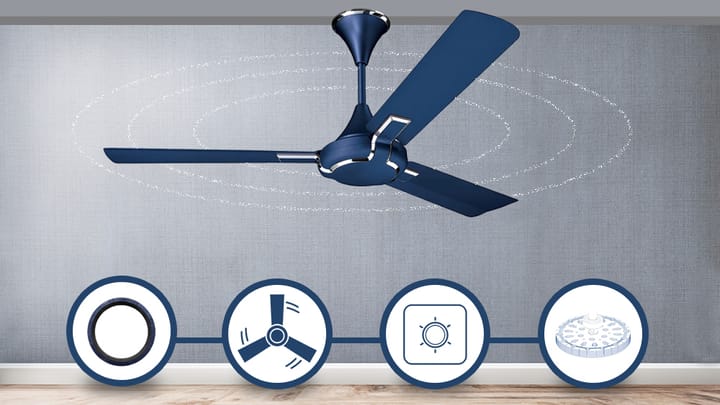Sustainable Elite Homz...

By - Avinash Yadav, Devanand K, Shreya Singh, and T M Shilpa
“...need two homes, a green one and a brown one, a grown one and a built one, two worlds in tension.”_ Robert Harbison
Increasing population and lack of land resources led into the vertical development of homes which are resource intensive. Furthermore, the openings on the sides of these buildings trap more heat than needed without any shading devices, forcing the cooling system to work harder. The high demand for resources at one location limits the consumption of resources in neighboring areas and in the near future for itself.
As a result, Elite Golf Greens, a residential housing project located in Sector 79, Noida, adopted sustainable strategies that optimizes the reduction of resource consumption. This resulted in earning of Gold Rating under IGBC Green Homes Rating System through timely advice from Greentree Global. GreenTree Global, whose sole mission is to drive green energy movements both internationally and in India by assisting developing projects, wouldn't have been able to guide this journey without its timely advice.


Green initiatives taken up by Elite Golf Greens…
SITE SELECTION AND PLANNING
•During the construction process, the site, with a footprint of 25,000 sqm, was carefully managed by basic amenities for the construction workforce, providing barricades, irrigation of water on the site, and a wheel to reduce air pollution and preserve the top soil on the site.

•Providing amenities for the occupants is an integral part of a successful building project. A number of major amenities are located within 1 km of Elite Golf Greens including ATMs, bus stops, grocery stores, a park, primary school, restaurant, and a temple.

•An estimated 35% of the project area is covered with vegetation that is designated as native plants, with a maximum coverage of 80%, while turf is restricted to 20%.

•Heat island mitigation measures have been implemented on 50% of the non-impervious areas and 100% of the roof areas have been painted with SRI paints and covered with solar panels.

•A total of 1290 parking spaces are provided, with 65 charging points to facilitate the adoption of electric vehicles and charging space.

•Elite Golf Green provides a range of facilities that meet the needs of the differently abled, including a designated parking area, braille-assisted elevator, ramps and walkways at entrances, and uniform floor levels to facilitate access.

WATER CONSERVATION
•As part of the project, rainwater harvesting pits were installed that can capture 84% of the runoff from roofs and impervious surfaces.
•A number of water-efficient plumbing fixtures have been installed on site, including dual flushing systems, low flow fixtures, and an efficient irrigation system with a central shutoff valve, pressure-regulating devices, and sprinklers.

•For measuring landscape water consumption, flush water consumption, and municipal water consumption, water meters have been installed.

ENERGY EFFICIENCY
•CFC-free air-conditioners, energy-efficient pumps, motors, and timer control units are used in the project.
•There is a 15% reduction in energy costs due to energy-saving glazing on the building, 100% of the common area’s lighting is powered by renewable energy provided by 81 KW of solar PV panels.

MATERIAL & RESOURCES
•Apart from providing separate bins for organic and dry waste in each dwelling unit, the project also features an on-site organic waste treatment facility that diverts 100% of organic waste from landfills, as well as 95% of construction debris.
•71% of the construction materials are sourced within 400 km of the site, and 33% of the materials are recycled.

INDOOR ENVIROMENTAL QUALITY
The following parameters are ensured for Indoor Environmental Quality (IEQ) -
•Provision of ‘No Smoking’ signages in the common areas•75% of the areas in all the units shows minimum daylight factor
•Exhaust systems and low VOC paints , adhesives and sealants have been used in the interior spaces.



Salutations
Homebuilders who value their clients' wellbeing along with timely delivery, transparency and ethical policies, and concern for the environment gain a special place in the industry. Such partnerships and commitments need more stimulation in India.



